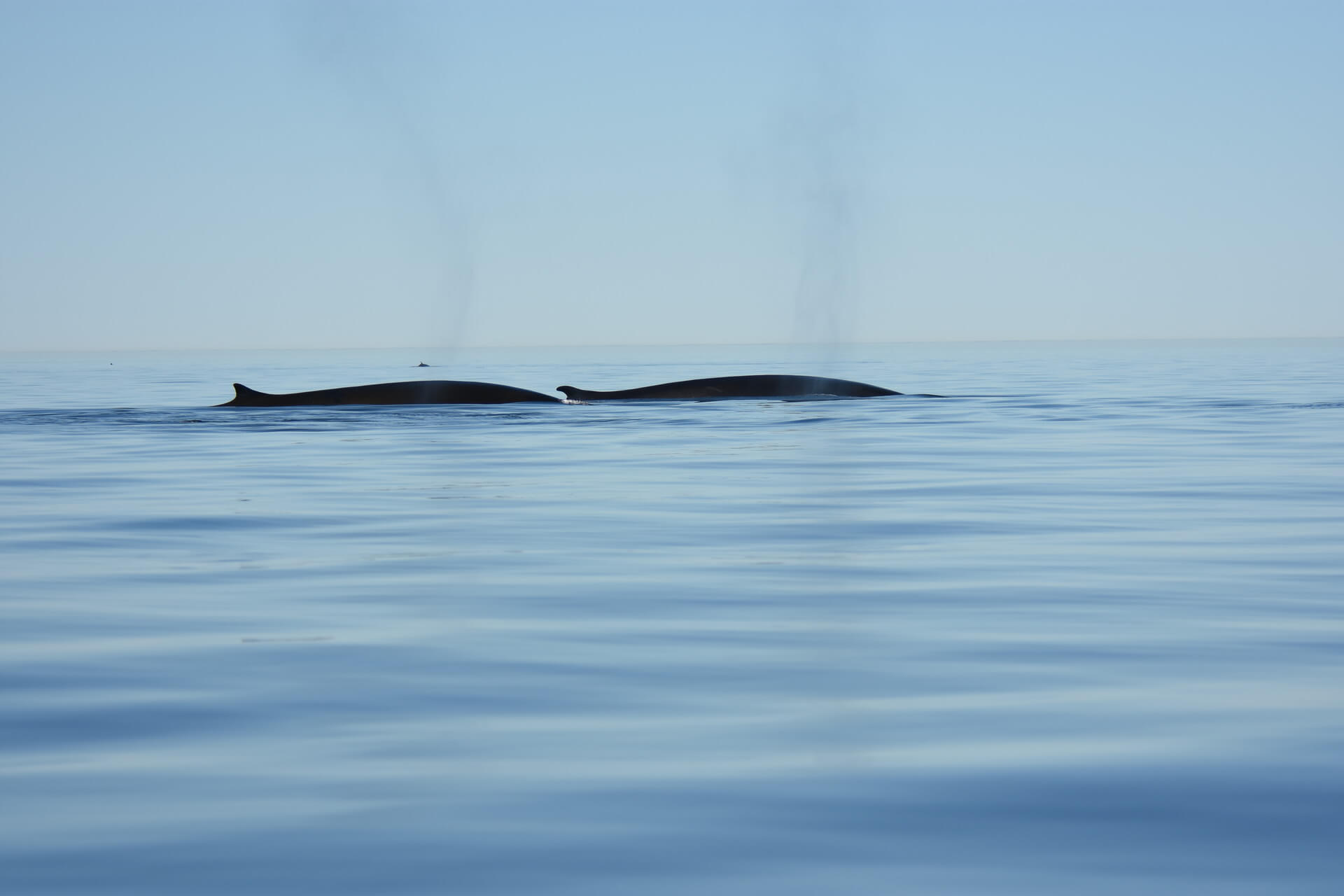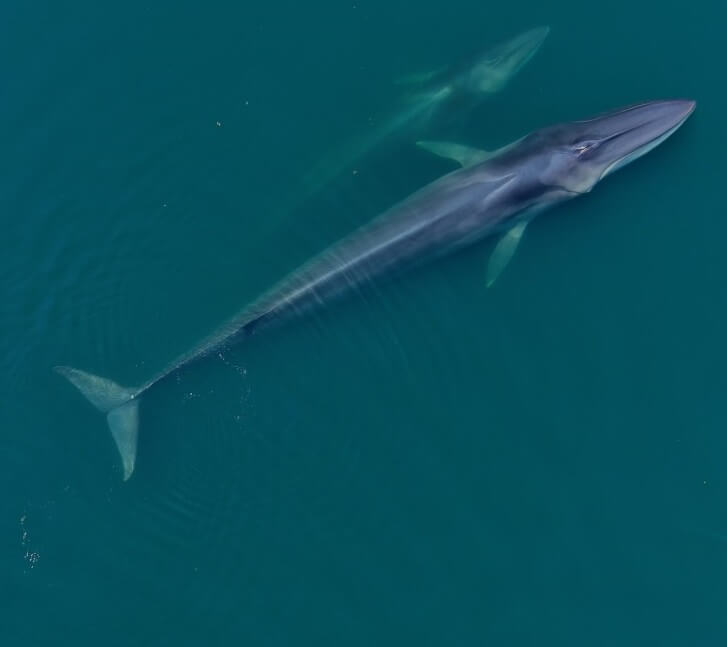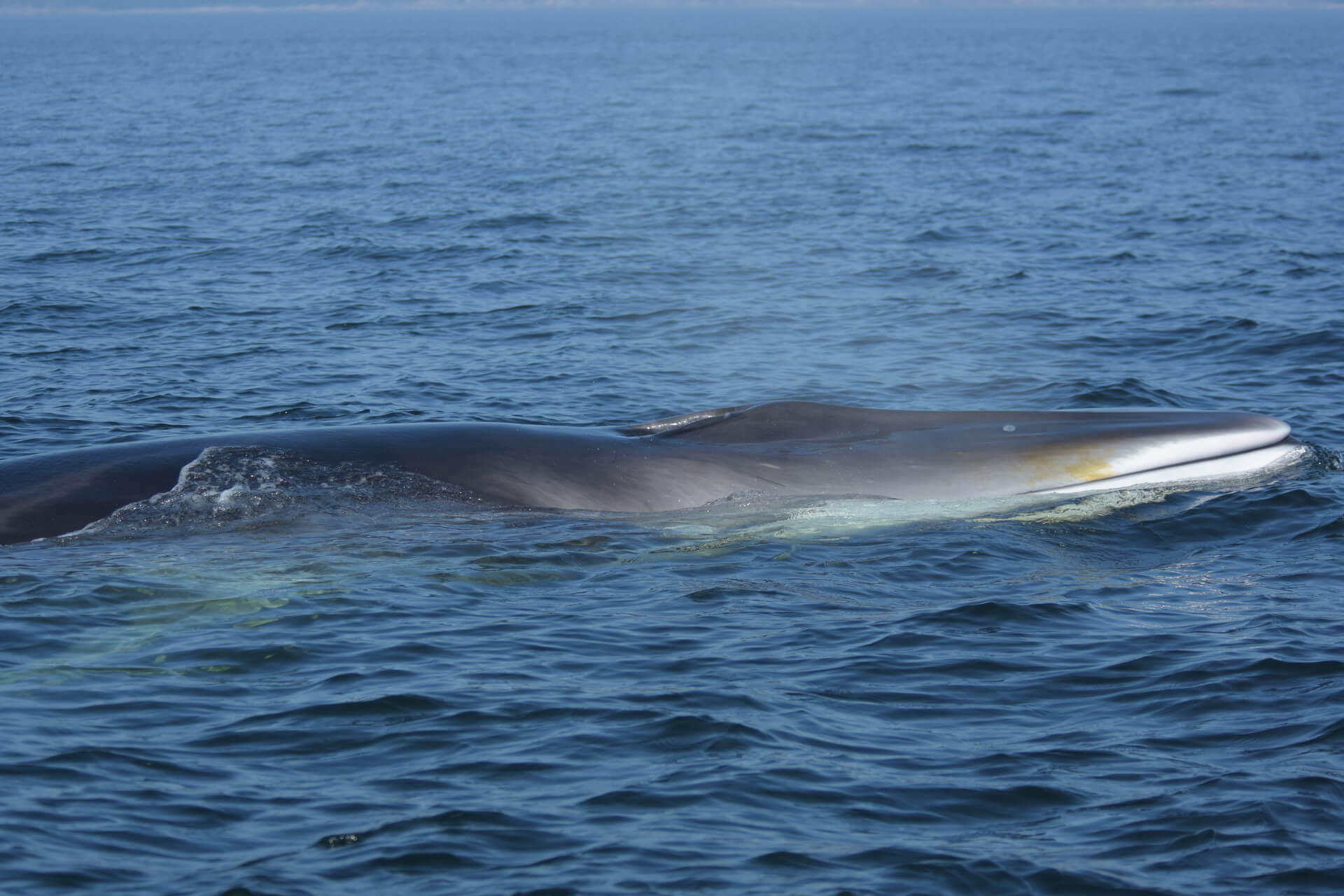Nicknamed the “greyhound of the sea,” the fin whale is the fastest of any of the large rorquals that frequent the St. Lawrence. Its cruising speed is 10 to 15 km/h, but when feeding it can top out at 40 km/h! However, other cetaceans such as sei whales, bottlenose dolphins and killer whales can be faster still, reaching speeds of 55-65 km/h or more. But how can the fin whale move so quickly despite its large size? asks a cruise passenger.
To excel in the butterfly stroke, what strategy might an Olympic athlete use? First, they can rely on powerful undulating movements of the body while perfecting their stroke technique. Then, they can use a gliding position that makes their movement all the more efficient. The winning recipe for the fin whale is similar: it can be as fast as it is thanks to its efficient propulsion and hydrodynamic morphology.
A powerful engine
To be a fast swimmer, one needs a good propulsive force. The fin whale’s powerful engine is its caudal peduncle, the part of its body that supports the caudal or tail fin. The peduncle allows the animal to generate significant thrust and accelerate. Whales wave their tails up and down, unlike fish and sharks, which use a left-to-right caudal movement. The fin whale’s tail contains two groups of strong muscles: extensors and flexors. Its movement is therefore as powerful and efficient on the ascent as it is on the descent.
Additionally, the caudal fin is flexible and shaped like a sickle or a thin crescent moon, which improves thrust and enables efficient propulsion in water. It’s as if the fin whale has flippers! In fact, baleen whales are the largest animals to use a swimming technique that biologists refer to as high efficiency lunate-tail swimming with high-aspect-ratio lifting surfaces.
Hydrodynamic morphology
To achieve high speeds, it is also necessary to minimize frictional drag when swimming. The fin whale is endowed with a number of morphological adaptations that enhance its hydrodynamics. It has smooth skin, a tapered body, and a pointed rostrum. Its ribs are thinner than those of other whales and are angled rearward. Conversely, the humpback whale, with its rough skin and protuberances, is not built for speed.
In addition to a slender and streamlined body, the fin whale has fins that offer good stability. Its pectoral fins are small and triangular, allowing it to remain stable and to maneuver easily underwater. Its dorsal fin is curved toward the tail and plays a role similar to the skeg on a boat. It allows the whale to stay on course and avoid tilting, even at high speeds.
Knowing how fin whales are so fast is a good starting point for answering the famous question: why? With their small pectorals and flattened heads, fin whales seem to have opted for speed over agility. These cetaceans may have acquired these adaptations due to fierce competition between individuals or in order to optimize their hunting techniques for different prey. How a given species has evolved is often a reflection of a journey between a number of compromises that remains difficult to interpret.







